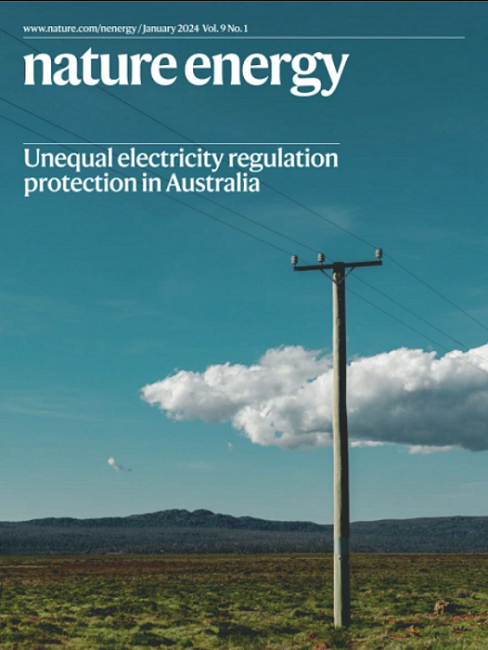范德华材料中盐固体解离的普遍超离子传导
IF 60.1
1区 材料科学
Q1 ENERGY & FUELS
引用次数: 0
摘要
设计无机固态电解质的传统策略,通常是通过掺杂超离子晶格,受到掺杂晶格兼容性的限制。在这里,我们提出固体解离,其中卤化物范德华材料作为固体溶剂溶解盐,形成无定形离子导电固体。利用这种方法,我们发现了73种材料,其中40种材料的离子电导率超过10−3 S cm−1,可以导电Li+, Na+, Ag+和Cu+。我们分析了溶剂和盐之间的原子尺度的相互作用,揭示了使固体解离的动态结构重排。在不同的溶剂-盐对中,一致的离子环境出现,揭示了在该系统中控制离子传输的普遍机制。类似于液体电解质的成分调整,固体解离允许针对特定应用条件对固态电解质进行针对性的工程设计。已开发出用于快速充电电池、低温电池和4.8 v高压电池的原型电解质,并展示了增强的干室稳定性和成本优势。固体解离为推进下一代固态电解质提供了一个通用的平台。传统的固态电解质设计受到掺杂-晶格兼容性的限制。这项工作介绍了固体解离,使用卤化物范德华材料溶解盐并创建具有高离子电导率和潜力的非晶态导体。本文章由计算机程序翻译,如有差异,请以英文原文为准。

Universal superionic conduction via solid dissociation of salts in van der Waals materials
Conventional strategies for designing inorganic solid-state electrolytes, typically via doping superionic lattices, are constrained by dopant–lattice compatibility. Here we propose solid dissociation in which halide van der Waals materials act as solid solvents to dissolve salts, forming amorphous ion-conductive solids. Using this approach, we discover 73 materials, with 40 exhibiting ionic conductivities exceeding 10−3 S cm−1, conducting Li+, Na+, Ag+ and Cu+. We analyse atomic-scale interactions between solvents and salts, uncovering dynamic structural rearrangements that enable solid dissociation. Across diverse solvent–salt pairs, consistent ionic environments emerge, revealing universal mechanisms governing ion transport in this system. Analogous to the compositional tuning of liquid electrolytes, solid dissociation allows targeted engineering of solid-state electrolytes for specific application conditions. Prototype electrolytes have been developed for fast-charging cells, low-temperature cells and 4.8-V high-voltage cells, and demonstrate enhanced dry-room stability and cost advantages. Solid dissociation offers a versatile platform for advancing next generation solid-state electrolytes. Conventional solid-state electrolyte design is limited by dopant–lattice compatibility. This work introduces solid dissociation, using halide van der Waals materials to dissolve salts and create amorphous conductors with high ionic conductivity and potential for use in devices.
求助全文
通过发布文献求助,成功后即可免费获取论文全文。
去求助
来源期刊

Nature Energy
Energy-Energy Engineering and Power Technology
CiteScore
75.10
自引率
1.10%
发文量
193
期刊介绍:
Nature Energy is a monthly, online-only journal committed to showcasing the most impactful research on energy, covering everything from its generation and distribution to the societal implications of energy technologies and policies.
With a focus on exploring all facets of the ongoing energy discourse, Nature Energy delves into topics such as energy generation, storage, distribution, management, and the societal impacts of energy technologies and policies. Emphasizing studies that push the boundaries of knowledge and contribute to the development of next-generation solutions, the journal serves as a platform for the exchange of ideas among stakeholders at the forefront of the energy sector.
Maintaining the hallmark standards of the Nature brand, Nature Energy boasts a dedicated team of professional editors, a rigorous peer-review process, meticulous copy-editing and production, rapid publication times, and editorial independence.
In addition to original research articles, Nature Energy also publishes a range of content types, including Comments, Perspectives, Reviews, News & Views, Features, and Correspondence, covering a diverse array of disciplines relevant to the field of energy.
 求助内容:
求助内容: 应助结果提醒方式:
应助结果提醒方式:


